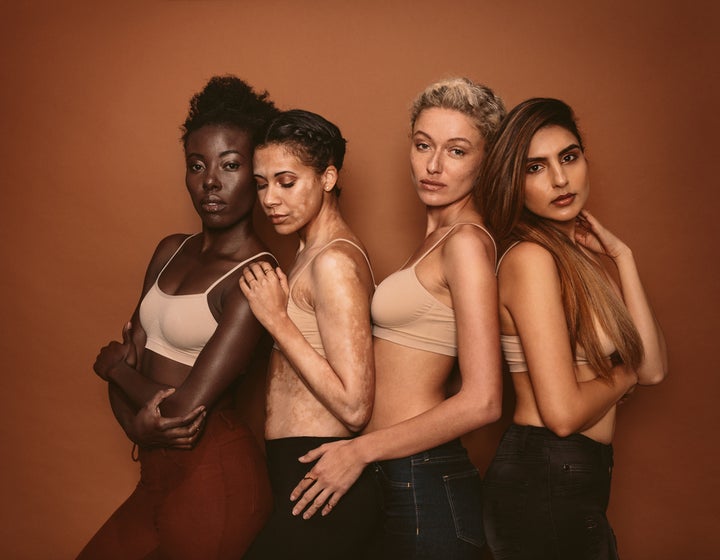Diversity is a hot topic right now: in Hollywood, in the workplace, and in beauty.
Since the launch of Rihanna’s Fenty Beauty line, inclusion has been at the tip of everyone’s tongue. The spike in popularity in Rihanna’s line has led to Estee Lauder, NARS and Kylie Cosmetics stepping up their efforts to promote their own products and demonstrate through advertising that yes, they too cater for different complexions.
Not only will you now see NARS featuring ethnically different models for their range of Radiant Longwear Foundation, but Kylie Cosmetics now features images of both Caucasian and African American models wearing her range of Crème Lipsticks.
However, in the midst of championing diversity, these powerhouses have seemingly forgotten about representation for the South Asian community – which calls into question their pledge to all ethnic minority women and their understanding of what diversity means.
Take Fenty Beauty for example. For some, the explosion of models in Rihanna’s first commercial perfectly captured the essence of the brand’s tagline, ‘Beauty for all.’

Reviews have raved about South Asians having more choice, but the truth is, we’ve developed a habit of settling for what brands give us, instead of speaking up for a line that truly reflects our 50 shades of brown. The black community has long advocated for a range that echoes the diversity of skin complexions within their demographic, and Rihanna has answered them. Yes, South Asians may find it easier to find a foundation shade in the Fenty Beauty range, but that’s because we share similar complexions as women from some black and bi-racial backgrounds. For far too long we’ve stood at cosmetic stands ferociously blending in foundation thinking ‘this will do’, when really we should be taking a leaf out of the black community’s book and say, “this isn’t good enough, we deserve better.”
Even the marketing behind the first launch didn’t consist of one model representing the South Asian and Indo-Caribbean community. You have beautiful women like Paloma Elsesser, Duckie Thot and Halima Aden flying the flag for their communities – even Indymarie Jean whose African American, Cuban and Cherokee background gives multi-racial women a sense of inclusivity. When it comes to South Asians though, where is our Neelam Gill or Shanina Shaik?
The idea of South Asians in industries like fashion and beauty can clash with the traditional ideals and culture that so many are raised with, leading to a shortage of models for casting agents to choose from. This is probably why quite often, the models that you would associate with foundation shades suited to South Asians are either bi-racial or Latino.
However, thanks to platforms like YouTube and Instagram, make up enthusiasts from all corners of the world are emerging and using their passion to carve out lucrative careers. For example, both UK-born YouTuber Kaushal and US-based Irene Khan, who initially started out as a photographer, are now well-recognised faces among South Asians on both sides of the pond. Surely their following and popularity is suggestive of a community of active beauty consumers? US-born Huda Kattan, who has both a strong Middle Eastern and South Asian following, launched her highly anticipated make-up line, Huda Beauty, which lines the shelves of Sephora – and is often sold out.
Even with these women acting as trailblazers and points of reference for other South Asians, there’s still a huge gap in mainstream beauty campaigns where representation is concerned.
The dialogue around diversity has often focused heavily on representation for African Americans and other black communities. While it’s long overdue for them to have a seat at the table and see themselves reflected in campaigns and advertising, the same should be expected for South Asian and Indo-Caribbean communities.
Diversity stretches across all ethnic minorities and it’s just as important for us to see ourselves represented and championed as it is for Latino, bi-racial and black communities.
I’ve previously spoken up for representation for ethnic minorities and the strides made for certain groups are evidence that it’s worth shouting about. However, South Asians have somehow been left behind in this wave, which is surprising given their contribution to the beauty industry.
In 2015, research by CEW and Mintel revealed that the average British woman spends roughly £100,000 on cosmetics in their lifetime. A significant percentage of that expenditure came from the British Asian community, spending an estimated £1.2 billion per year.
Surprisingly L’Oreal’s True Match campaign is one example that can be seen as a success, as 23 ambassadors - all of whom represent different branches of society, support their 23 shades.
My love for make up hasn’t wavered and is unlikely to. However, a brand simply saying they’re diverse is no good anymore. They need to show it in their casting choices. L’Oréal, for example, may say we’re all worth it, but it’s time brands showed us that they are too.
